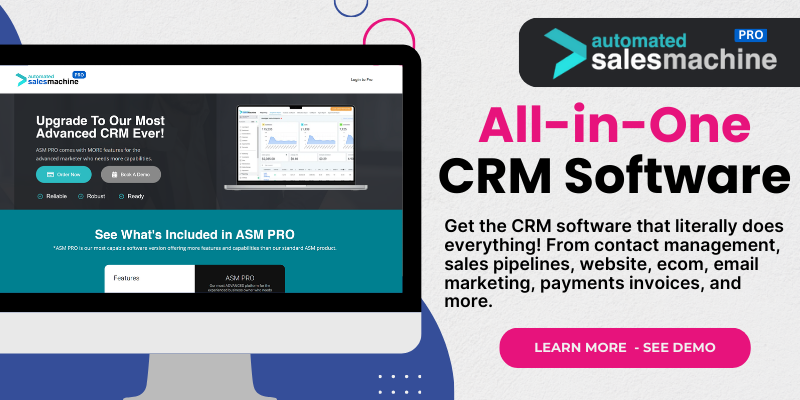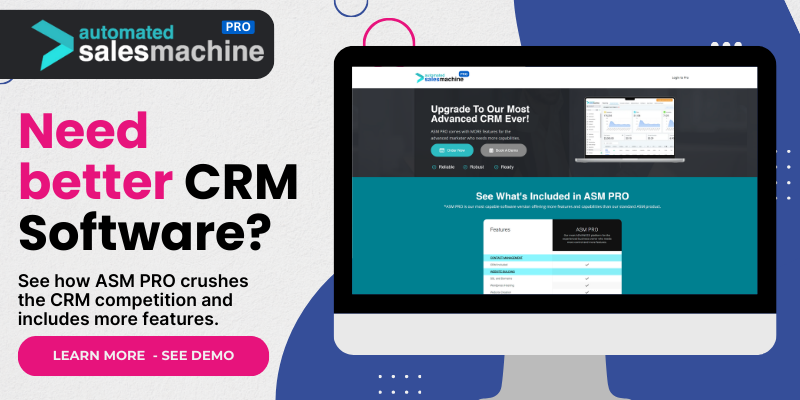1. HubSpot CRM
Ease of Use
When I first started exploring CRMs, HubSpot was recommended to me by so many folks in the industry. And honestly, I get why! It’s incredibly user-friendly, making it perfect for small businesses or those new to CRM systems. The intuitive interface allows you to jump right in without a steep learning curve.
I remember diving into the dashboard for the first time and thinking, “Wow, this looks tidy!” Everything is laid out neatly, making it easy to manage not just customer relationships but also inventory. You can track products effortlessly and keep everything synced with sales and marketing efforts.
Plus, the mobile app is a lifesaver! I can manage everything on the go. It’s so liberating not to be tethered to my desk, and the mobile features keep me connected with inventory management regardless of where I’m at.
Integration Capabilities
One of the coolest things about HubSpot is its flexibility with integrations. You can plug in all sorts of tools, enhancing how your inventory system operates. For instance, if I need to connect my email marketing software or an e-commerce platform, it’s just a few clicks away!
This feature is golden when you’re running multiple sales channels—I often use it to keep an eye on stock levels across various platforms. It ensures I’m always up to date and can prevent annoying stock-outs that frustrate customers.
Ultimately, the integration capabilities streamline my workflow, saving me a ton of time and effort—something we can all appreciate!
Customizability
Now, let’s chat about customizability. If you’re anything like me, you don’t want a one-size-fits-all solution. HubSpot allows plenty of customization for dashboards and reports, letting me tailor my inventory management system precisely how I like it.
With the ability to create custom fields and properties, I can track unique aspects of my inventory that matter to my business. For instance, I like to monitor specific product categories, which helps me make informed decisions about reordering stock or promoting certain items.
So whether I want detailed reports or a streamlined visual of what inventory levels look like, HubSpot has my back. It’s like setting the stage for a performance—you’re only as good as your setup!
2. Zoho CRM
Comprehensive Features
Zoho CRM is another powerhouse I stumbled upon! The feature set is extensive, which means it caters to businesses of all sizes. From inventory tracking to lead management, Zoho covers it all.
I particularly love the inventory management aspect. It lets me track stock levels, manage purchase orders, and oversee sales orders seamlessly within the CRM. This holistic view allows me to see how my inventory impacts other areas like customer satisfaction and sales performance.
In my experience, having all these features under one roof has streamlined my operations significantly. Instead of juggling separate systems, everything’s integrated, making my life easier!
Automation Tools
Automation is a game-changer. With Zoho, I’ve been able to automate several routine tasks—things like sending out low-stock notifications or reminders for reordering inventory. This leaves me with more time to focus on strategic growth rather than getting bogged down by administrative tasks.
I remember the first time I set up an automation rule; it felt like a small victory! These automated notifications ensure that I never miss a beat in managing my inventory, keeping me ahead of the curve.
And in a busy sales environment, having these automations in place means I can respond quick and save valuable time. It’s a win-win!
Cost-Effective Options
If you’re on a budget like I was when starting, Zoho offers affordable pricing plans that don’t skimp on features. With various tiers available, it’s super easy to find a plan that suits your business needs without breaking the bank.
Plus, considering all the functions it provides, it’s a pretty phenomenal value in the grand scheme of things. I feel like I’m getting a high-quality tool without the high-quality price tag, and that’s something we all want to achieve, right?
This cost-effective aspect makes Zoho a great choice for startups or smaller enterprises looking for robust inventory management solutions without the hefty price tag associated with many other tools.
3. Salesforce CRM
Robust Data Insights
Let’s not forget Salesforce. This platform is often the go-to for larger companies, and for a good reason! It provides deep data insights that can revolutionize how I manage inventory.
With its advanced reporting and analytics capabilities, I can see which products are flying off the shelves and which aren’t moving as fast. This helps me make informed decisions about stock levels—no one likes overstocking items that just sit there!
Plus, the customizable reporting allows me to tweak data views to fit my specific needs, which is priceless. Having granular insights helps me drive strategy based on real-time data.
Integration with Other Tools
Salesforce’s integrations are top-notch. I’ve plugged in various applications seamlessly, such as inventory management software or even financial tools, ensuring that every aspect of my operations is linked. It’s like having a well-oiled machine!
This interconnectedness has helped me streamline processes, making it faster to adjust inventory levels based on incoming sales data. The ability to integrate with e-commerce platforms is particularly beneficial, allowing me to manage real-time stock data across multiple channels.
By tugging at all these strings, I can maintain a cohesive view of my business’s performance, driving growth through accurate inventory management.
Customized Workflows
One standout feature of Salesforce is the ability to create customized workflows. This means I can establish processes tailored to how I run my business, ensuring that every step ensures efficiency.
Say I want to automate a restocking workflow; setting it up is straightforward, and I can specify triggers based on inventory metrics. This helps me stay proactive instead of reactive regarding stock levels—it’s incredibly empowering!
These capabilities have saved me from countless headaches and helped avoid stock issues that come from manual overrides. It’s like having a personal assistant explicitly designed to manage my inventory! How fantastic is that?
4. Pipedrive
User-Friendly Interface
Pipedrive steals the show when it comes to coalienting a user-friendly experience! I gravitated toward it because of its straightforward design, making managing inventory accessible for anyone who comes on board.
It visually represents sales processes in a manner that’s easy to follow, which represents my inventory levels clearly. No one likes to feel lost, right? With Pipedrive, I’ve noticed a smoother onboarding process for new team members.
The simplicity doesn’t mean it lacks functionality. It combines ease of use with robust inventory management tools that allow me to get my essentials sorted quickly and efficiently.
Pipeline Management
One area I can’t overlook is its pipeline management feature. Pipedrive helps me visualize how inventory levels affect sales progress. It’s a critical insight that enables me to adjust my inventory dynamically based on the sales pipeline.
I can see which products correlate to active deals, allowing me to strategize on reorder levels based on forecasted sales. This flexibility has been crucial in avoiding both overstock and stockouts.
Through this, I feel empowered and preemptive about inventory management, keeping my business ready for any sales spikes!
Affordable Options
Budget-conscious business owners will likely appreciate the pricing plans that Pipedrive offers. They present various tiers that allow users to select the plan based on their requirements, ensuring that what we pay aligns with what we get.
This flexibility means I can start slow and add more features later as my business grows, a flexibility I’ve found really useful during my scaling phase. Ultimately, this mitigates risks while still providing powerful tools for inventory management.
With that said, Pipedrive has struck a fantastic balance between cost and value, making it an excellent choice for small to medium enterprises.
5. Microsoft Dynamics 365
Comprehensive Solutions
Last but not least, let me introduce you to Microsoft Dynamics 365. This robust platform delivers comprehensive solutions that include everything I need for effective inventory management.
One of the standout traits of Dynamics 365 is its capability to manage inventory across multiple channels, which has been super handy for me as I expand my business. It combines data analytics with inventory tracking to create a solution that’s impossible to overlook!
With its framework, I get a bird’s eye view of my stock levels, leveraging real-time updates to help inform purchasing decisions. This is crucial for avoiding inventory pitfalls!
Advanced Analytics
When I talk about analytics, Dynamics 365 shines brightly. The detailed reporting features provide insights into sales trends, helping me figure out which products I should prioritize in my inventory.
One cool thing I enjoy is the predictive analysis features that help forecast future inventory needs based on trends, seasonal sales, and other vital metrics. This information means I can plan ahead, ensuring stock availability during peak times.
It’s so comforting to know I’m equipped with the right data to make strategic inventory decisions, and it feels like I’m always one step ahead of the game!
Seamless Integration with Other Microsoft Products
Finally, one of the things I love most about Microsoft Dynamics 365 is its seamless integration with other Microsoft products. If you use tools like Excel, Outlook, or Teams, the synergy is fantastic!
This integration allows me to easily manage inventory data alongside other company data without missing a beat. It makes collaboration with my team easier—everyone is aligned and on the same page.
Being able to pull data from various sources and leverage it for effective inventory management means I’m not just looking at snapshots; I’m seeing the whole picture!
FAQs
1. What does CRM stand for?
CRM stands for Customer Relationship Management. It encompasses systems that help businesses manage interactions with existing and potential customers.
2. Why is inventory management important in CRM?
Inventory management in CRM is crucial as it ensures that businesses have the right products available to meet customer demands while avoiding overstock and resulting costs.
3. How do I choose the best CRM for my business?
Consider your specific business needs, budget, and the features that matter most to you—such as ease of use, integration options, and scalability—as you explore different CRM options.
4. Can I use multiple CRMs for inventory management?
While it’s possible to use multiple CRMs, it’s often more efficient to choose one that meets all your needs to avoid fragmented data and confused processes.
5. Are there free CRM options available for inventory management?
Yes, several CRM systems offer free versions or trials, like HubSpot CRM. These can be a great starting point, allowing you to test functionality before investing in a paid solution.

